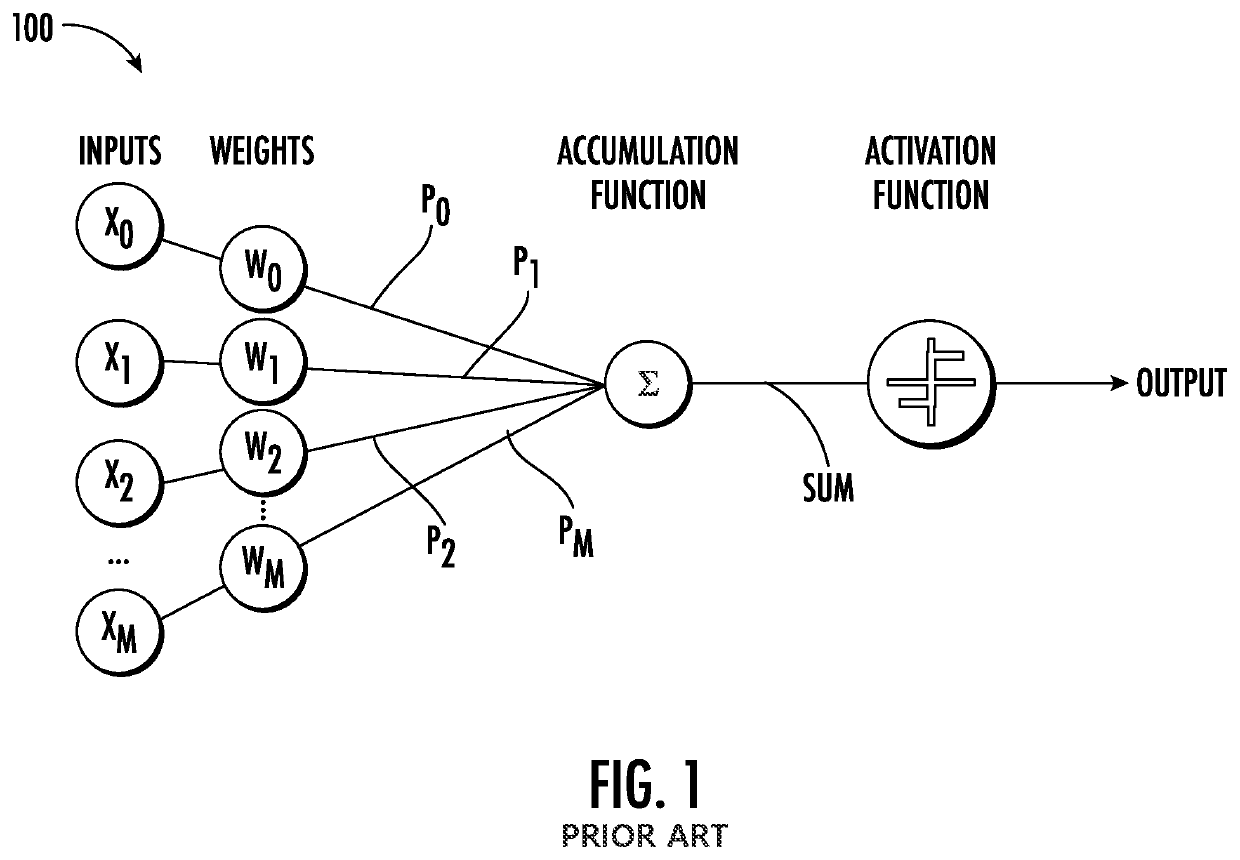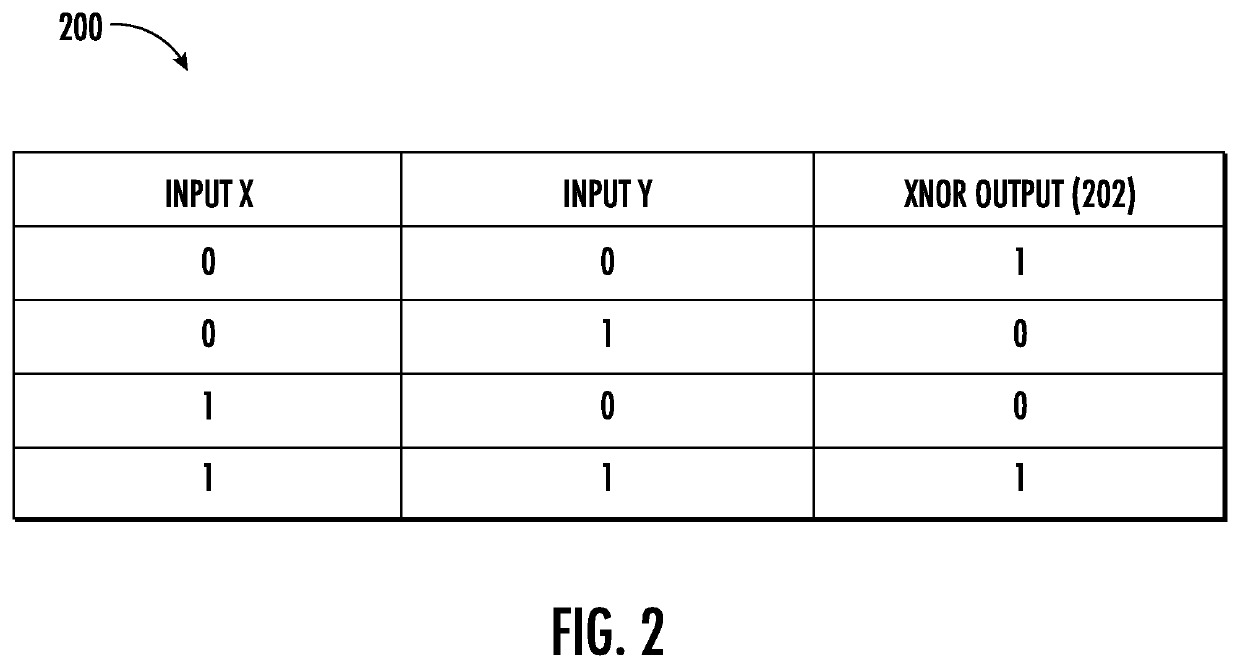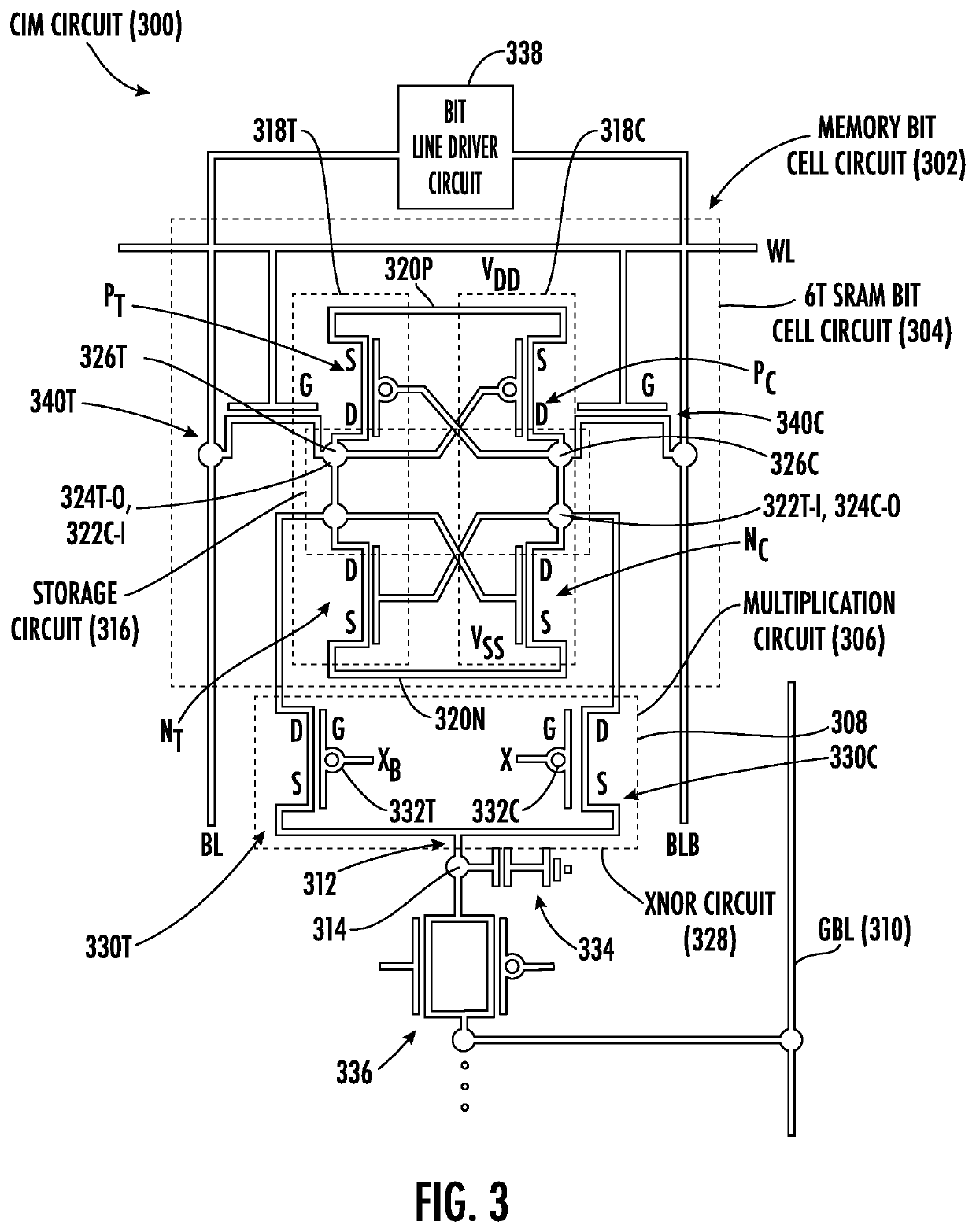Compute-in-memory (CIM) employing low-power CIM circuits employing static random access memory (SRAM) bit cells, particularly for multiply-and-accumluate (MAC) operations
a technology of compute-in-memory and bit cells, applied in computing, digital storage, instruments, etc., can solve the problems of voltage flip on the complementary storage node, read disturbance issue between the storage circuit, etc., to reduce the standby and dynamic power of the cim circuit, reduce the supply voltage, and increase the likelihood of a read disturbance
- Summary
- Abstract
- Description
- Claims
- Application Information
AI Technical Summary
Benefits of technology
Problems solved by technology
Method used
Image
Examples
Embodiment Construction
[0029]With reference now to the drawing figures, several exemplary aspects of the present disclosure are described. The word “exemplary” is used herein to mean “serving as an example, instance, or illustration.” Any aspect described herein as “exemplary” is not necessarily to be construed as preferred or advantageous over other aspects.
[0030]Aspects disclosed in the detailed description include low-power compute-in-memory (CIM) systems employing CIM circuits employing static random access memory (SRAM) bit cells. As a non-limiting example, the CIM circuits can be used for multiply-and-accumulate (MAC) operations, such as those employed in machine-learning applications. The CIM circuits each include a SRAM bit cell circuit that includes a storage circuit for storing data. Data can be read from the storage circuit of the SRAM bit cell circuit by pre-charging a bit line and activating an access circuit (e.g., an access transistor) coupled between the bit line and the storage circuit. D...
PUM
 Login to View More
Login to View More Abstract
Description
Claims
Application Information
 Login to View More
Login to View More - R&D
- Intellectual Property
- Life Sciences
- Materials
- Tech Scout
- Unparalleled Data Quality
- Higher Quality Content
- 60% Fewer Hallucinations
Browse by: Latest US Patents, China's latest patents, Technical Efficacy Thesaurus, Application Domain, Technology Topic, Popular Technical Reports.
© 2025 PatSnap. All rights reserved.Legal|Privacy policy|Modern Slavery Act Transparency Statement|Sitemap|About US| Contact US: help@patsnap.com



